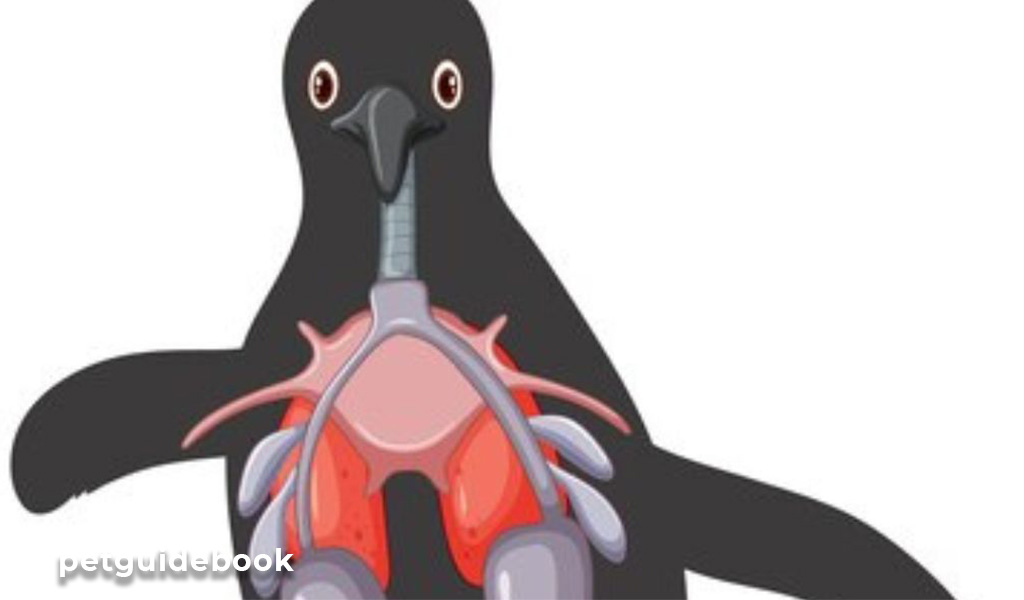Bird lung disease is a severe disease. Bird lung disease is a topic that often flies under the radar, yet it can have severe implications for our feathered friends. While many people know common avian illnesses such as avian flu and Newcastle disease, bird lung disease remains relatively unknown. However, there are some surprising facts about this condition that every bird owner and enthusiast should know. From its potential to affect both wild and domesticated birds to the lesser-known symptoms and treatment options, delving into the world of bird lung disease unveils a fascinating and crucial aspect of avian health.
Table of Contents
Imagine this: A tiny sparrow flits through the air with seemingly effortless grace, but beneath its delicate exterior lies a complex respiratory system vulnerable to various threats, including bird lung disease. Despite their ability to soar through the skies with apparent ease, birds can be susceptible to respiratory conditions that may go unnoticed by even experienced caretakers. By uncovering five unexpected truths about bird lung disease, we can understand how these conditions impact our avian companions and take steps towards better care for them. So join us on a journey into the intriguing world of bird lung disease as we explore some eye-opening revelations you won’t miss!
Introduction: Understanding Bird Lung Disease
Let’s dive into the fascinating world of bird lung disease, a topic often overlooked in avian health discussions. These diseases can significantly impact our feathered friends, yet the general public does not widely understand them. By exploring the intricacies of these conditions, we can gain a newfound appreciation for the complexities of avian biology and the importance of proactive measures to protect our avian companions.
One surprising aspect of bird lung disease is its wide-ranging effects on different species and environments. These diseases pose threats across diverse ecosystems, from wild birds in their natural habitats to domesticated poultry in agricultural settings. Understanding the various factors contributing to the development and spread of bird lung disease can shed light on effective prevention and management strategies.

Understanding how human activities intersect with animal health can inspire efforts to mitigate potential risks and preserve biodiversity.
Fact 1: Birds are susceptible to respiratory infections
Birds, just like humans, can be vulnerable to respiratory infections. This vulnerability stems from their lungs’ intricate structure, making them susceptible to various pathogens and environmental factors. Additionally, the high metabolic rate of birds also makes them more prone to respiratory diseases as they require a constant and efficient supply of oxygen.
Furthermore, the overcrowding of birds in aviaries or pet stores can also increase the risk of spreading respiratory infections among avian populations. The proximity and shared air supply provide an ideal environment for illnesses to spread rapidly. Bird owners and professionals in the aviculture industry must remain vigilant and proactive in preventing and managing these respiratory infections to ensure the well-being of our feathered friends. Bird lung disease can be removed to know this. Understanding these vulnerabilities is essential for implementing effective strategies that safeguard bird health.

Fact 2: Avian lung anatomy is unique
Avian lung anatomy is truly a marvel of evolution, showcasing unique adaptations that set birds apart from other animals. Unlike mammals, birds have a system of air sacs throughout their bodies, allowing for a unidirectional flow of air through their lungs. This intricate network of interconnected air sacs provides incredible respiratory efficiency but also aids in maintaining buoyancy while flying—an essential feature for these airborne creatures.
Furthermore, the avian lung structure enables birds to extract more oxygen from the air with each breath than mammals. These remarkable adaptations have allowed birds to thrive in diverse environments and achieve extraordinary feats such as high-altitude flying and long-distance migrations. By understanding the complexity and ingenuity of avian lung anatomy, we gain a profound appreciation for the remarkable capabilities of our feathered friends and their resilience in the face of potential respiratory challenges.
Fact 3: Environmental factors can trigger lung disease
Environmental elements play an essential role in triggering bird lung disease in birds. Indoor and outdoor pollution can have detrimental effects on avian respiratory systems. From toxic fumes to airborne particles, the air quality within a bird’s environment directly impacts their lung health. Additionally, exposure to mold, fungi, or other allergens can exacerbate existing respiratory conditions or even lead to the development of new ones.
Furthermore, seasonal changes and weather patterns can also put Avion’s lungs at risk. Sudden temperature fluctuations or high humidity levels can stress a bird’s respiratory system, making them more susceptible to lung disease. Bird owners and enthusiasts must be aware of these environmental triggers and take proactive measures to maintain optimal air quality for their feathered companions. By understanding and addressing these ecological factors, we can help protect our avian friends from potential lung diseases and ensure their overall well-being.

Fact 4: Early detection is crucial for treatment
Early detection of bird lung disease is crucial for effective treatment. Unfortunately, this illness often goes undetected until it reaches an advanced stage, making successful intervention more challenging. When symptoms become noticeable, the damage to the avian respiratory system may be extensive. Moreover, delaying diagnosis and treatment can significantly diminish the chances of recovery for affected birds.
Moreover, early detection improves outcomes for infected birds and reduces the risk of transmission to other members of a bird population. Prompt identification and isolation of infected individuals can prevent the spread of the disease within aviaries or flocks. This underscores the importance of vigilant monitoring and regular health checks for all avian species, as early intervention can make a substantial difference in managing and mitigating this severe condition.
As birds take to the skies with grace and agility, it’s easy to forget that they, too, are susceptible to diseases that can impact their ability to soar. Bird lung disease may not be widely discussed, but its effects on avian health can be significant. In this article, we’ll uncover five surprising facts about bird lung disease that will shed light on the lesser-known aspects of avian health and leave you with a newfound appreciation for these resilient creatures.
From the majestic eagles soaring high above the mountains to the tiny hummingbirds flitting amongst flowers, all birds are vulnerable to various respiratory illnesses. Understanding the intricacies of bird lung disease is crucial for anyone who admires these feathered marvels. Whether you’re an avid bird watcher or simply curious about the hidden challenges facing our avian friends, these revelations will broaden your understanding of the threats they face in their aerial domain. So buckle up as we embark on a fascinating journey into bird lung disease and discover some eye-opening truths that will change your perspective on our airborne companions forever!
Fact 5: Human activities can impact bird lung health
It’s not just avian diseases that threaten bird lung health. Mortal activities such as industrial emissions, vehicle exhaust, and deforestation can significantly impact the respiratory systems of birds. Air pollution containing harmful chemicals and particulate matter can infiltrate their lungs, leading to respiratory issues and decreased lung function. Furthermore, habitat destruction disrupts the natural ecosystems that birds rely on for clean air, exacerbating the risk to their lung health.
As we continue to encroach on natural habitats and pollute the atmosphere with our activities, it’s imperative to consider the far-reaching consequences for bird populations. Not only does this affect the birds themselves, but it also disrupts entire ecosystems and biodiversity. By understanding how human actions can influence bird lung health, we can take steps to mitigate these impacts through conservation efforts, emission reduction strategies, and sustainable land management practices. Our ability to coexist harmoniously with our feathered friends hinges on recognizing and addressing these challenges head-on.
Bird lung disease is often overlooked, but it’s more prevalent and concerning than one might think. From pet parrots to wild birds, this condition can significantly impact avian populations worldwide. In this article, we’ll delve into five surprising facts about bird lung disease that will pique your interest and shed light on the importance of understanding and addressing this issue. Did you know that bird lung disease can affect individual birds and entire flocks?
It’s a phenomenon that poses profound implications for conservation efforts and raises questions about the interconnectedness of avian health within ecosystems. With new research uncovering unexpected facets of this ailment, bird enthusiasts and environmentalists must stay informed about its potential implications. So buckle up as we unravel some eye-opening revelations about bird lung disease that will change how you perceive our feathered friends’ health.
Conclusion: Taking steps to protect avian respiratory health
In conclusion, protecting Avian’s respiratory health is essential for the well-being of our feathered friends. By understanding the risk factors and potential sources of infection, bird owners can take proactive steps to minimize the impact of respiratory diseases. Regular veterinary check-ups, sanitation practices, and adequate ventilation are crucial in maintaining a healthy bird environment.
Moreover, promoting a stress-free and enriched living space can also strengthen their immune systems against respiratory illnesses. Additionally, raising awareness about the importance of avian respiratory health within bird-owning communities can help prevent the spread of diseases. Ultimately, taking steps to protect avian respiratory health benefits individual birds and contributes to collective efforts in safeguarding avian populations as a whole.
Bird lung disease may not be widely discussed, but its impact on avian populations and the potential health risks to humans cannot be overlooked. As we delve into the fascinating world of bird respiratory systems, we uncover five surprising facts about bird lung disease that you need to know. From the intricate structure of avian lungs to the lesser-known transmission routes, this article aims to shed light on a crucial yet often neglected aspect of bird health.
Whether you’re an avid birder, a pet bird owner, or intrigued by the wonders of nature, these unexpected insights will surely leave you with a newfound appreciation for our feathered friends and their delicate respiratory mechanisms. So buckle up as we unravel the mysteries surrounding bird lung disease and discover how it impacts birds and humans in ways you never imagined!





